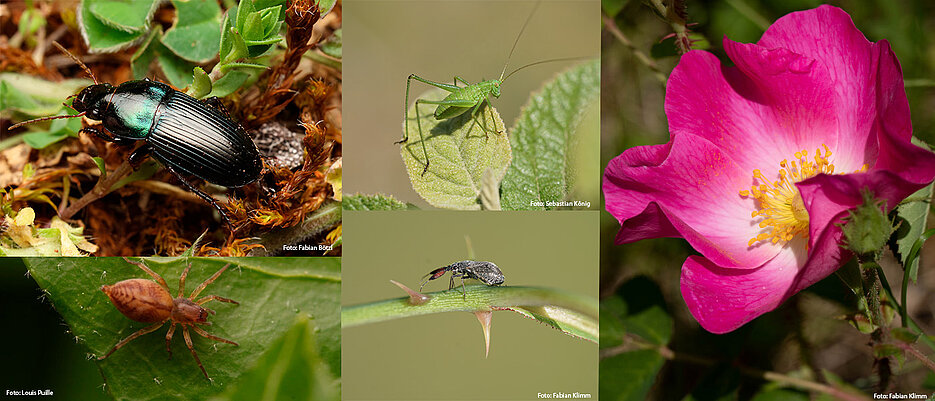Shrub fringes on the edges of forests and fields protect animal species and have a positive effect on biodiversity: This was reported by a research team from the University of Würzburg.

They are the transition zones between forest and open landscape and serve as habitats and retreats for various animal species. This refers to scrub fringes, the proportion of which is very low in Central Europe due to forestry and agriculture. This is detrimental to animals and plants that depend on these shrubby landscape elements.
A research team led by Professor Jochen Krauss, Chair of Animal Ecology and Tropical Biology at the Julius-Maximilians-Universität Würzburg, has examined the affected animal and plant species in the first comprehensive study of its kind. The researchers have shown that a mosaic of open and semi-open shrub fringes is needed to maximize biodiversity. These fringe types can be distinguished by how densely the shrubbery is overgrown.
To generate positive effects for biodiversity, active and well-thought-out fringe management is required: "We recommend that landowners, foresters, landscape conservation associations and nature conservation authorities give shrub fringes sufficient space. These habitats provide rare and endangered animal and plant species with habitats that are otherwise rarely found in our intensively used cultivated landscape," says Krauss.
The results were produced in cooperation with the Ebern Institute for Biodiversity Information. They have been published in the Journal of Applied Ecology.
Determining Diversity in the Shrub Fringes
The researchers examined a total of 45 shrub edges in Bavaria - including habitats near the Lower Franconian towns of Höchberg, Retzstadt and Güntersleben. They were particularly interested in herbaceous plants, grasshoppers, bugs, ground beetles and spiders. Ground traps and other trapping methods were used to count and identify the animals.
The zoologists differentiated between open and semi-open shrub fringes. Within these two categories, the researchers tested the influence of three other parameters on biodiversity: the size of the area, the proportion of near-natural habitats in the surrounding landscape and the habitat quality. The latter is made up of, among other things, the number of species of shrubs and their structural richness.
Fringe Management Necessary at Landscape Level
The most important influences on diversity are the quality of the habitat and the degree of shrub cover. "We realized that across all groups, the open edges with high quality were the most species-rich: They had the highest species richness of herbaceous plants, grasshoppers and bugs. We also found many different spider species in these habitats, while the species richness of ground beetles was highest in semi-open fringes of lower habitat quality," says Fabian Klimm, first author of the study.
The appeal is clear: "We need a fringe management at landscape level. Both open and semi-open fringes should be promoted to maximize diversity," says the doctoral student. Biodiversity ensures essential ecosystem services for humans, such as the pollination of crops or ecological pest control.
Publication
Life at the (h)edge - Multidiversity in shrub ecotones is driven by habitat and shrub foliage cover. Fabian S. Klimm, Fabian A. Boetzl, Sebastian König, Markus Bräu, Lara Burtchen, Klaus Mandery, Jean-Léonard Stör, Jochen Krauss. Journal of Applied Ecology, 13. May 2025, DOI 10.1111/1365-2664.70061






